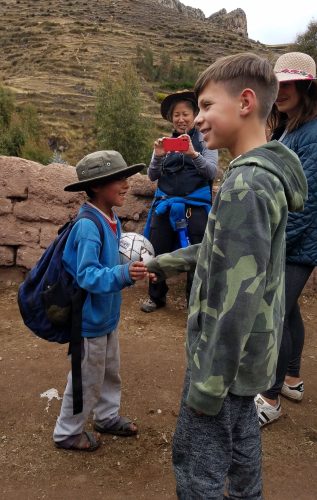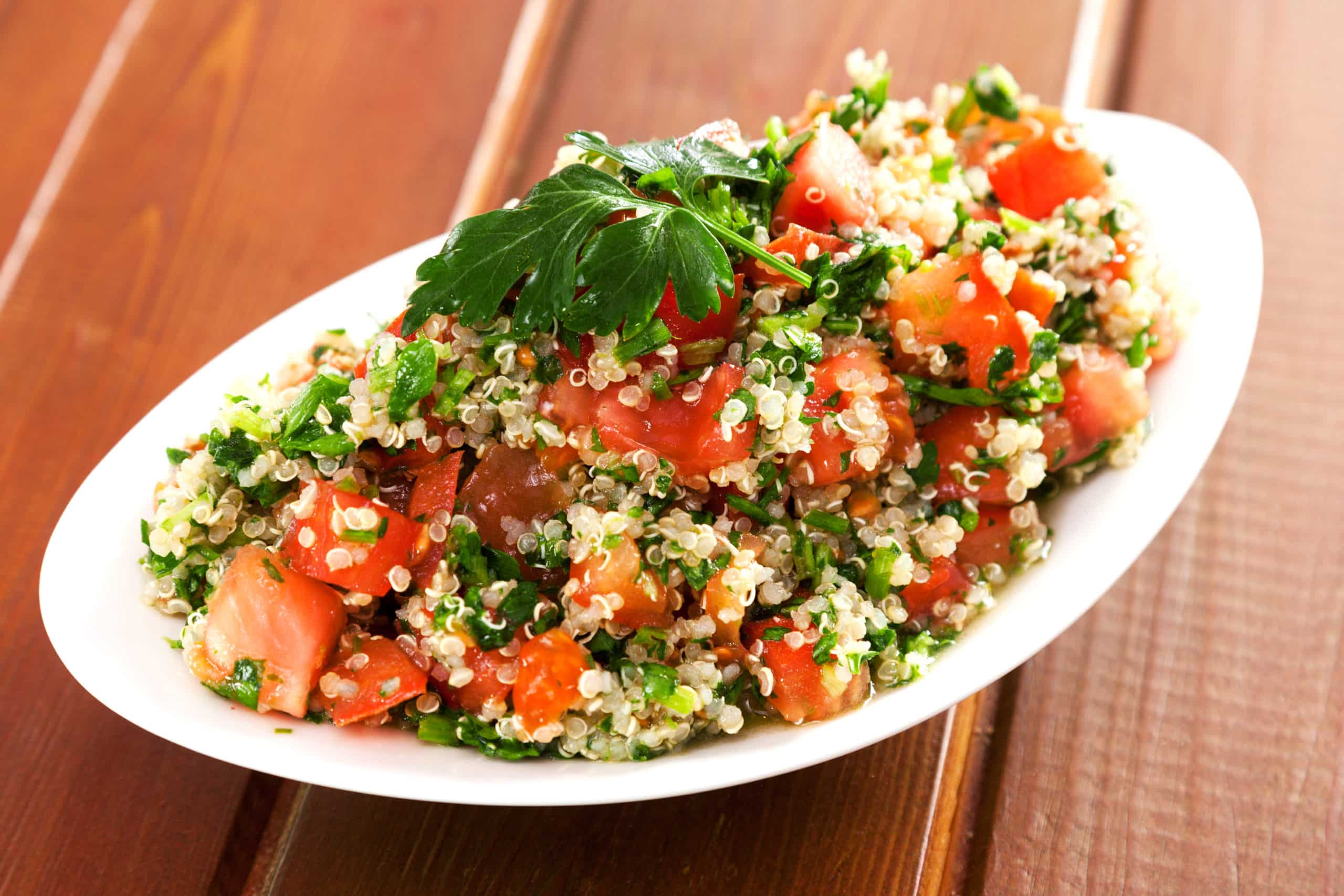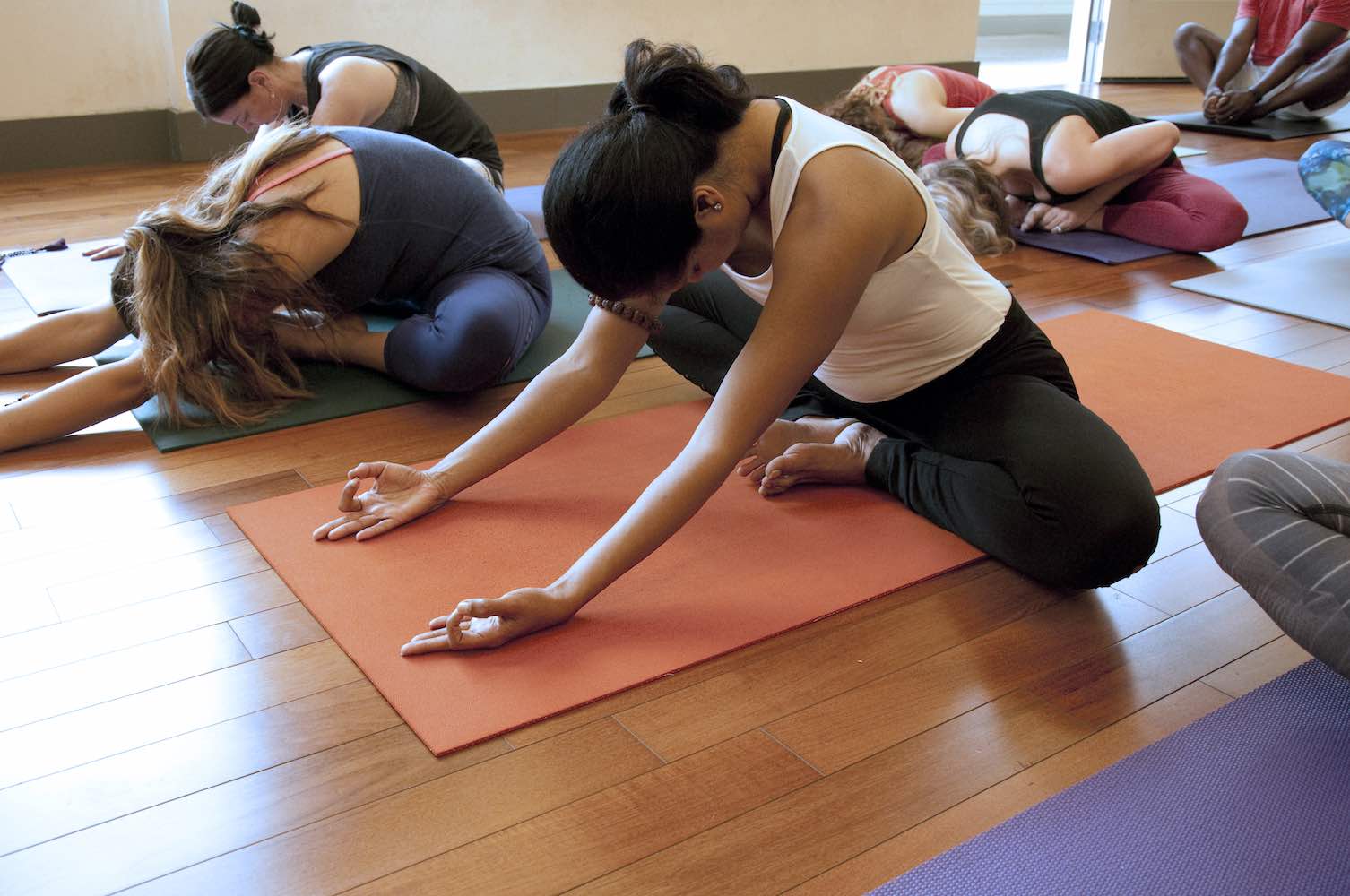High up in the Andes Mountains, at close to 14,000 feet elevation, the air is cool and thin. It’s high desert in the Sacred Valley of Peru. In partnership with Nonprofit Organization Andean Alliance for Sustainable Development, I led a group of Bay Area natives to Peru in the name of karma yoga, or selfless service. Our mission was to build greenhouses for Incan descendants in the small village of Chachin. Not much agriculture grows above 14,000 feet, and throughout the year, greenhouses provide diversity of crops to feed the villagers. On our ascent, we passed donkeys, llamas, and villagers in bare feet (more often than not, they passed us). As we’d cross paths, we looked at each other as if to say, “Fancy meeting you here in this neck of the woods!”
At the first village we came to, the scene was surreal: weatherworn ladies in brilliantly colored tapestry draped around their shoulders, carried wood and satchels of potatoes. On the other hand, we Silicon Valley residents were adorned in Patagonia jackets and tech gadgets. We brought along a dozen new soccer balls as gifts for the children we met. My two children (then 13-year-old daughter and 11-year-old son) accompanied me on this trip. As they started to kick around one of the balls, slowly, but surely, local kids from the village joined in. Soon enough, kids from every corner of the village came out to play. Soccer fever spread, and bellows of laughter and giggles echoed in the town center.
At the end of our soccer playing, my son handed a ball and brand new pump to a little boy, about seven years old. He stood frozen for a moment, then, with a grin from ear-to-ear, and wide-open sparkling eyes, he wrapped his arms around my son and exclaimed, “Gracias amigo!” At first, my son was shocked, then, he visibly melted. I watched his smile grow ear-to-ear and his entire body soften. He looked at me with raised eyebrows and without words, saying, “Mom, this is a magical moment!”
Days later, in Pisac Market, an open-air market for purchasing handmade artisan pieces from the locals, my son found a metal statue of a happy Buddha sitting in front of the Incan calendar. He purchased it with his own money and when he gave it to me, he grinned that same ear-to-ear smile with wide-open sparkling eyes. He wrapped his arms around me and said, “Mom, one thing I really learned on this trip is how good it feels to give.” I felt myself melt, just as he had.
Anyi is a concept in Peru referring to an ancient tradition of reciprocity. It is translated in the Quechua language to mean “today for me, tomorrow for you,” but it goes beyond those words. It is a way of living the principles of balance and equanimity, giving and receiving – from the soul.
Even as I reflect on the image of melting, I think of a substance like butter oozing into a soft mound of liquid. I was curious enough to look it up, assuming the formal definition of melting to be only what happens under intense heat, and what surprised me is how tender and loving the translation of melting can be. In fact, according to Merriam Webster dictionary, “Melting is having a quality that causes gentle feelings of love.” Meanwhile, karma is a word for action, and why not create actions that have a ripple effect creating gentle feelings of more connection and love in our world? This reminds me of the popular character Olaf in the beloved animated movie Frozen. Olaf is a friendly snowman who walks the mountains. He befriends the main character Elsa, and loves warm hugs. His memorable, heart-warming quote in the movie is, “Some people are worth melting for.” I couldn’t agree more.
What I treasure most about travel where service is involved, is the ability to learn and grow, purely from heart-centered connection with others. Time and time again, no words are exchanged, or, if they are, may be in different tongues, but the feelings are that of understanding, love, and connection. Specifically, karma yoga and service retreats (which I have the humble and grateful opportunity to lead) spawn connection between cultures, the bridge-building, and the transpiring inner healing. In this case, who knew a soccer ball and a couple of young boys could teach a village the power of giving, receiving, and melting?














